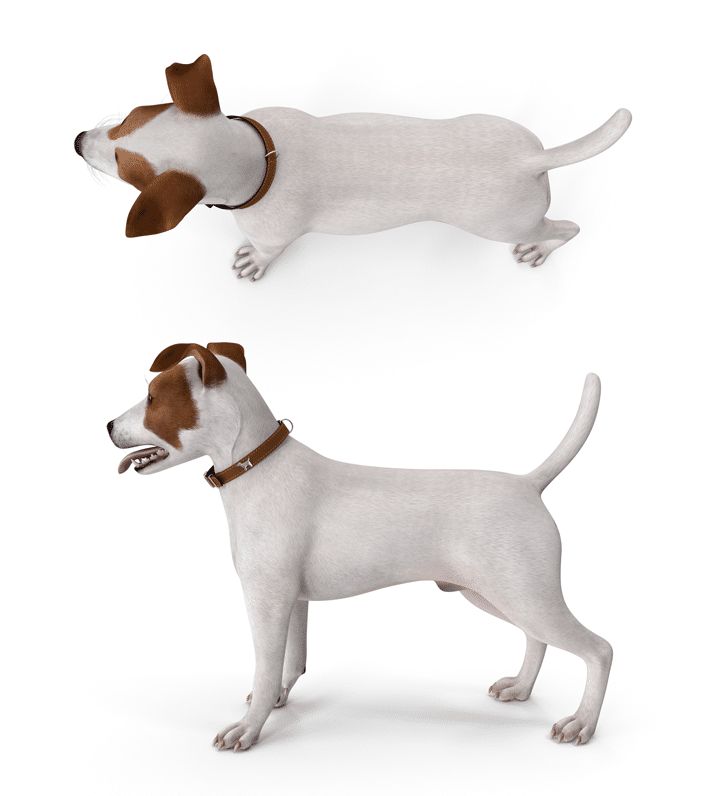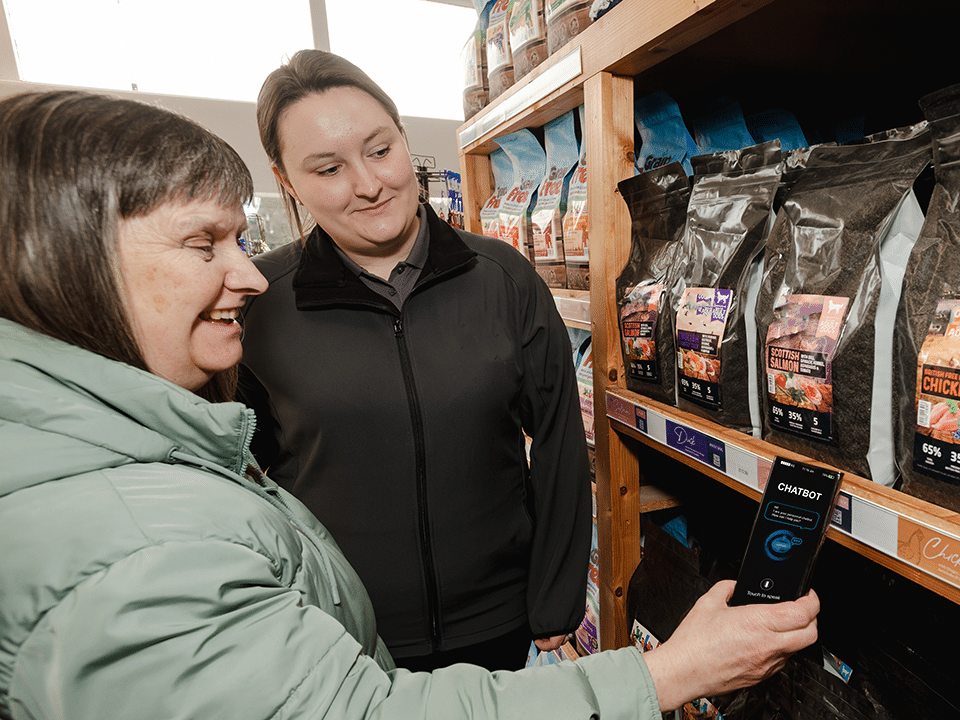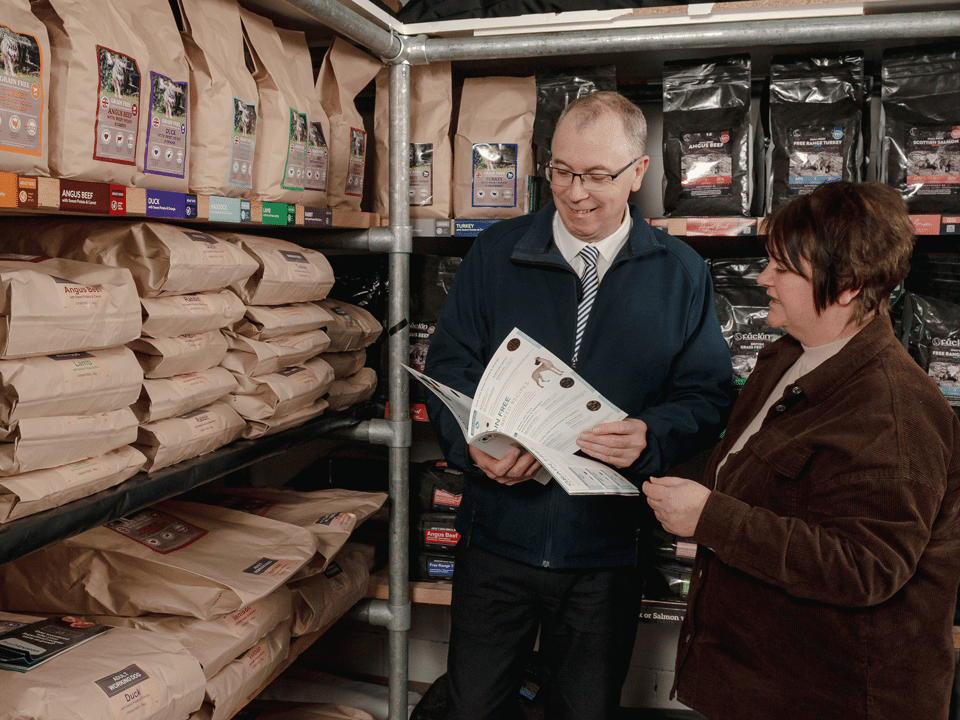
Obesity is defined as excessive fat accumulation that presents a health risk. Obesity in pets is now officially recognised as a disease by many pet health organisations. A survey among veterinary professionals confirmed that 51% of dogs and 44% of cats are overweight or obese, highlighting that obesity is a growing concern (PFMA, 2018). Within the same survey, 100% of the vets said they were concerned about the rise in obesity; however, research amongst 8,000 households confirmed that 67% of pet owners admit that they are not worried about their pets’ weight (PFMA, 2018, PFMA, 2019). This suggests that the majority of pet owners are unaware of the health risks associated with obesity or are unable to identify if their pet is overweight.
The risks associated with obesity in cats and dogs include musculoskeletal diseases such as arthritis, cardiac disease, respiratory disease, diabetes mellitus and shortened life expectancy (Bland et al., 2009; Salt et al., 2019). As well as increased health risks, research suggests there is a clear link between an animal’s ideal weight and its quality of life (German et al., 2012). Maintaining a healthy weight can ensure the pet remains mobile, physically able to explore its surroundings and free from discomfort.
Is my Pet overweight?
To establish if a cat or dog is at their ideal weight, a body condition scoring (BCS) system can be used. BCS can be subjective; however, the 5-integer scale (Table 1; Table 2) BCS system has shown good repeatability and predictability between different users (German et al., 2006). On a scale of 1 to 5, the optimal score for cats and dogs is 3 (Bjornvad et al., 2011; Chun et al., 2019). Although some level of understanding is required, pet owners can use the visual and physical examination described in the BCS to determine their pet’s body condition.
Table 1: Guide to 5-point Body Condition Scores in Cats (Source: FEDIAF, 2020)
1
Emaciated
Ribs and bony prominences are visible and easily palpable with no fat cover. Severe abdominal tuck when viewed from the side and an exaggerated hourglass shape when viewed from above.
≤10%

2
Thin
Ribs and bony prominences are easily palpable with minimal fat cover. Marked abdominal tuck when viewed from the side and an obvious waist when viewed from above.
10-20%

3
Ideal
Ribs and bony prominences are palpable with a slight fat cover. Abdominal tuck is present when viewed from the side, and a well proportioned waist when viewed from above.
20-30%

4
Overweight
Ribs and bony prominences can be felt under a moderate fat cover. No abdominal tuck, but a moderate abdominal fat pad is visible from the side and no waist from above.
30-40%

5
Grossly Obese
Ribs and bony prominences are very difficult to feel under a thick fat cover. Large pendulous ventral bulge with extensive abdominal fat deposits, when viewed from the side. Markedly broadened back when viewed from above. Fat deposits around face, neck and limbs.
>45%

Table 2: Guide to 5-point Body Condition Scores in Dogs (Source: FEDIAF, 2020)
1
Emaciated
Ribs and bony prominences are visible and easily palpable with no fat cover. Severe abdominal tuck when viewed from the side and an exaggerated hourglass shape when viewed from above.
≤4%

2
Thin
Ribs and bony prominences are easily palpable with minimal fat cover. Marked abdominal tuck when viewed from the side and an obvious waist when viewed from above.
5-15%

3
Ideal
Ribs and bony prominences are palpable with a slight fat cover. Abdominal tuck is present when viewed from the side, and a well proportioned waist when viewed from above.
15-25%

4
Overweight
Ribs and bony prominences can be felt under a moderate fatcover. No abdominal tuck but a moderate abdominal fat pad is visible when viewed from the side and no waist when viewed from above.
25-35%

5
Grossly Obese
Ribs and bony prominences are very difficult to feel under a thick fat cover. Large pendulous ventral bulge with extensive abdominal fat deposits, when viewed from the side. Markedly broadened back when viewed from above. Fat deposits around face, neck and limbs
>40%

Why is my Pet overweight?
Obesity is often a result of increased energy intake and reduced energy expenditure; however, it can also be a result of the animal’s metabolism (German, 2006; Bland et al., 2010). Other factors which can affect weight include:
• Breed and Genetics
• Physical activity
• Neuter status
• Sex
• Age
• Disease/Medical Conditions
• Environmental factors
A study by Coe and colleagues (2019) found that when dog owners were asked to measure out their pet’s kibble, inaccurate measurements ranged from 47% underestimation to 152% overestimation. Underestimation can lead to weight loss and, in some cases, nutrient deficiency, whereas overestimation can lead to weight gain. The study concluded that using electronic weigh scales to measure food was the most accurate device.
Pet Obesity and Weight Loss: What should I feed my pet?
Therapeutic treatments for obesity include dietary management and increased physical activity. Diets high in protein and fibre have been shown to be successful at increasing satisfaction and fullness (Heuberger & Wakshlag, 2011). Diets supplemented with L-Carnitine have also been shown to aid weight and fat loss in overweight dogs and cats (Sunvold et al., 1998; Center, 1998). Complete pet food diets can be formulated specifically to target weight loss which typically has reduced metabolisable energy (kcals) and a lower fat content compared to standard diets. These types of diets are usually marketed as “Light” feeds.
The metabolisable energy content of dry pet food is calculated using a standardised calculation referred to as the National Research Council (NRC) four-step predictive equation (NRC, 2006). For pets prone to weight gain, it is recommended to feed ≤ 90 kcal ME/kg0.75 in dogs and a minimum of 52 kcal ME/kg0.67 in cats (FEDIAF, 2020). When feeding a specific diet for weight loss, the feeding guidelines for the product will reflect the reduction in calorie intake required. Adjustments to feeding amounts may still be needed throughout the weight loss programme depending on the individual pet. Feeding guides do not factor in additional calories consumed in other forms such as treats, chews, table scraps, etc. Complementary feeds, such as treats, should be restricted if the pet is on a diet, or the additional calories should be factored into the feeding regime.
Exercise
A contributing factor to weight gain in pets is the lack of exercise. Exercise can take many forms, such as walking, playing or training. Although more research is needed, puzzle feeders or scatter feeding have been shown to provide enrichment and stimulation and extend feeding times (Dantas et al., 2016). A tailored exercise regime, alongside the correct calorie intake, can aid weight loss and, subsequently, weight maintenance.

Weight Maintenance
Once the pet has reached its optimal weight, it is important to maintain this, which can be challenging. For weight maintenance in dogs, the daily recommended intake can increase to 110 kcal ME/kg0.75 assuming the dog is participating in moderate activity levels (1-3 hours/day). For weight maintenance in cats, the daily recommended intake can increase to 75 kcal ME/kg0.67 for neutered or indoor cats or 100 kcal ME/kg0.67 for active cats (FEDAIF, 2020). Daily intake can be adjusted to suit the individual pet’s condition and lifestyle to maintain their optimum weight.
References
Bjornvad, C.R., Nielsen, D.H., Armstrong, P.J., McEvoy, F., Hoelmkjaer, K.M., Jensen, K.S., Pedersen, G.F. and Kristensen, A.T. (2011). Evaluation of a nine-point body condition scoring system in physically inactive pet cats. American Journal of Veterinary Research, 72(4), pp.433–437.
Bland, I.M., Guthrie-Jones, A., Taylor, R.D. and Hill, J. (2009). Dog obesity: Owner attitudes and behaviour. Preventive Veterinary Medicine, 92(4), pp.333–340.
Bland, I.M., Guthrie-Jones, A., Taylor, R.D. and Hill, J. (2010). Dog obesity: Veterinary practices’ and owners’ opinions on cause and management. Preventive Veterinary Medicine, 94(3-4), pp.310–315.
Center, SA. (1998). Safe weight loss in cats. In: Reinhart GA, Carey DP, eds. Recent Advances in Canine and Feline Nutrition Volume II: 1998 Iams Nutrition Symposium Proceedings. Wilmington, Ohio: Orange Frazer Press,165-181.
Chun, J.L., Bang, H.T., Ji, S.Y., Jeong, J.Y., Kim, M., Kim, B., Lee, S.D., Lee, Y.K., Reddy, K.E. and Kim, K.H. (2019). A simple method to evaluate body condition score to maintain the optimal body weight in dogs. Journal of Animal Science and Technology, 61(6), pp.366–370.
Coe, J.B., Rankovic, A., Edwards, T.R. and Parr, J.M. (2019). Dog owner’s accuracy measuring different volumes of dry dog food using three different measuring devices. Veterinary Record, 185(19), pp.599–599.
Dantas, L.M., Delgado, M.M., Johnson, I. and Buffington, C.T. (2016). Food puzzles for cats. Journal of Feline Medicine and Surgery, 18(9), pp.723–732.
FEDIAF (2020). Nutritional Guidelines For Complete and Complementary Pet Food for Cats and Dogs. [online] Available at: https://fediaf.org/images/FEDIAF_Nutritional_Guidelines_2020_20200917.pdf.
German, A.J. (2006). The Growing Problem of Obesity in Dogs and Cats. The Journal of Nutrition, 136(7), pp.1940S- 1946S.
German, A.J., Holden, S.L., Moxham, G.L., Holmes, K.L., Hackett, R.M. and Rawlings, J.M. (2006). A Simple, Reliable Tool for Owners to Assess the Body Condition of Their Dog or Cat. The Journal of Nutrition, 136(7), pp.2031S – 2033S.
German, A. J., Holden, S. L., Wiseman-Orr, M. L., Reid, J., Nolan, A. M., Biourge, V., & Scott, E. M. (2012). Quality of life is reduced in obese dogs but improves after successful weight loss. The Veterinary Journal, 192(3), pp.428-434.
Heuberger, R. and Wakshlag, J. (2011). The relationship of feeding patterns and obesity in dogs. Journal of Animal Physiology and Animal Nutrition, 95(1), pp.98–105.
National Research Council (2006). Nutrient requirements of dogs and cats. Washington: The National Academies Press.
PFMA (2018). New Report reveals rise in pet obesity and heightened veterinary concern. [online] Available at: https://www.pfma.org.uk/news/new-report-reveals-rise-in-pet-obesity-and-heightened-veterinary-concern
PFMA (2019). PFMA Obesity Report 2019. [online] Available at: https://www.pfma.org.uk/_assets/docs/White%20Papers/PFMA-Obesity-Report-2019.pdf
Salt, C., Morris, P.J., Wilson, D., Lund, E.M. and German, A.J. (2019) Association between life span and body condition in neutered client-owned dogs. Journal of Veterinary Internal Medicine, 33, pp.89-99.
Sunvold GD, Tetrick MA, Davenport GM, Bouchard GF. (1998) Carnitine supplementation promotes weight loss and decreased adiposity in the canine. Proceedings of the XXIII World Small Animal Veterinary Association. p.746.

Charlotte Stainer
GA Pet Food Partners Junior Pet Nutritionist
You may also like...
Article written by Charlotte Stainer
The Pros and Cons of AI in Pet Retail
You may have frequently encountered the term “AI” or “AI technology” in the media. From unlocking your phone using Face ID, asking for directions on your [...]




